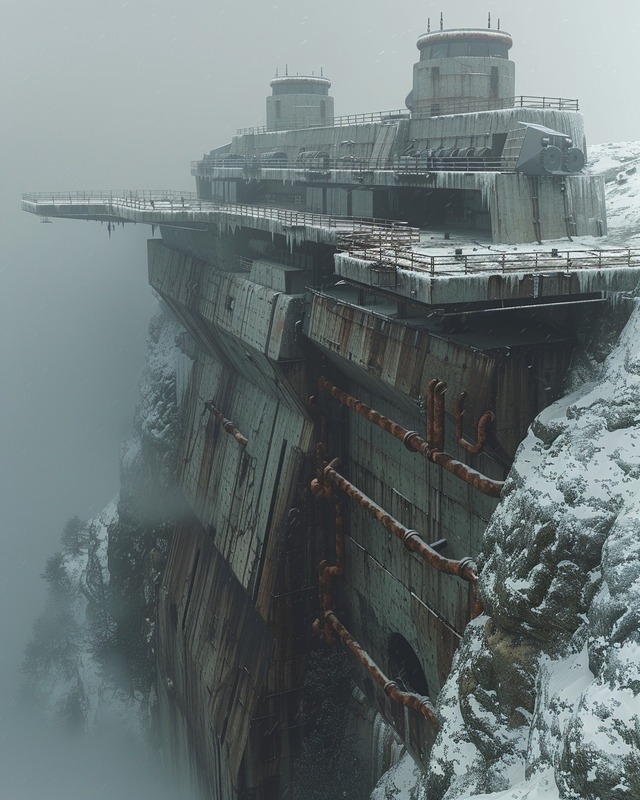Cliffside structures are extraordinary feats of engineering, seamlessly blending functionality with breathtaking landscapes. The concept bunker depicted in the image represents the ingenuity and resilience of such designs, built to endure extreme conditions. Around the world, real-life counterparts like military bunkers, submarine bases, and seed vaults demonstrate the strategic importance and architectural brilliance of these facilities. Let’s explore these fascinating cliffside marvels and the stories they hold.
Conceptual Bunker Design: Features and Speculated Purpose
The bunker in the image exudes an industrial yet futuristic aesthetic. Its angular structure clings tightly to the cliffside, using gravity-defying engineering to balance utility with resilience. The rusted pipes, reinforced concrete, and extensive platform indicate its ability to endure harsh environments, such as snowy peaks or coastal storms.
Its purpose is likely twofold: to act as a secure location while offering observation and monitoring capabilities. The placement suggests strategic thought—possibly for military defense, scientific research, or resource extraction. The concept mirrors the qualities of real-world cliffside structures that are built to withstand the elements while serving critical roles in isolated areas.
Though a product of AI creativity, this design draws inspiration from real-world cliffside structures that exist in extreme environments around the globe. These facilities, built for strategic purposes, demonstrate humanity’s ingenuity in blending functionality with nature’s challenges. In the next section, we’ll explore some of these remarkable real-life cliffside structures, whose awe-inspiring designs mirror the spirit of this imagined bunker.
Real-Life Counterparts: Cliffside Bunkers and Facilities
Cliffside structures like the one in the image exist around the globe. From abandoned Cold War relics to modern survival installations, these facilities demonstrate architectural brilliance in extreme conditions. Here are some notable examples:
Balaklava Submarine Base (Ukraine)

Hidden within the cliffs of Balaklava Bay, this Cold War-era naval base was a Soviet stronghold for nuclear submarines. Built to withstand direct nuclear attacks, the facility includes reinforced tunnels carved deep into the mountain. Its resemblance to the concept bunker is striking, with both showcasing the integration of military-grade architecture with natural landscapes.
Video:
Olavsvern Naval Base (Norway)
Located near Tromsø, Norway, this decommissioned naval base is another example of a cliffside facility built for strategic purposes. Carved into mountains and lined with reinforced steel, it provided submarine docking and maintenance during the Cold War. Today, it remains an icon of military ingenuity.
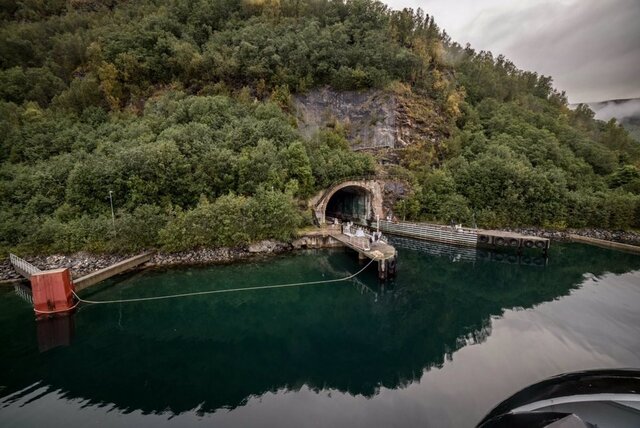
Cheyenne Mountain Complex (USA)
Built into Cheyenne Mountain, Colorado, this bunker is one of the most secure military installations in the world. Designed to survive nuclear blasts, the complex is hidden deep within the granite, similar to how the concept bunker clings to the rugged cliffs. The facility serves as a command center and remains operational to this day.
Video:
Trondheim Submarine Pens (Norway)
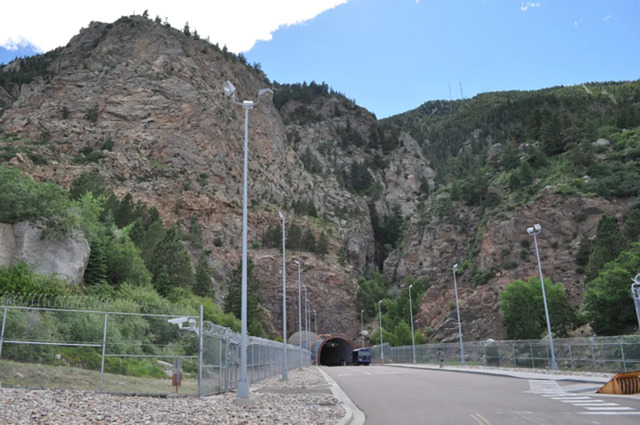
During World War II, Nazi Germany constructed submarine bunkers along Norway’s coast to protect U-boats. These cliffside pens, with their massive concrete walls and proximity to the sea, reflect the defensive and industrial purpose of the bunker in the image.
Svalbard Global Seed Vault (Norway)
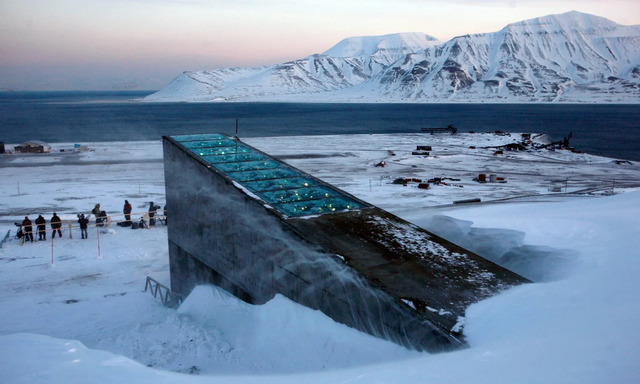
This Arctic installation, designed to safeguard the world’s crop biodiversity, is embedded in a mountain on Svalbard Island. Though its purpose is different, its design—utilitarian and resilient—matches the harsh, icy environment it inhabits. The concept bunker shares this ability to endure extreme climates.
Video:
Strategic Importance of Cliffside Structures
Cliffside facilities are not just feats of engineering—they are strategic marvels that take full advantage of their locations. Their placement on cliffs provides several critical benefits:
Natural Defense: The elevation and rugged terrain of cliffs make them natural barriers against attacks. Many military bunkers, like Balaklava and Cheyenne Mountain, were built into cliffs to utilize these advantages, shielding their operations from both ground assaults and natural disasters.
Environmental Resilience: Cliffside structures are built to endure extreme conditions. Reinforced concrete, steel frameworks, and deep integration into the rock allow these buildings to survive earthquakes, bombings, and severe weather. The bunker in the image exemplifies these qualities, standing defiantly against snow and ice.
Stealth and Seclusion: Many of these facilities are concealed from view, blending seamlessly into their natural surroundings. This makes them harder to detect, providing an added layer of security. During wartime, this ability to stay hidden was crucial for facilities like the Trondheim submarine pens.
Architectural Challenges and Innovations
Constructing cliffside structures presents significant challenges, requiring innovative solutions:
- Construction Techniques: Building on or into cliffs often involves extensive excavation and reinforcement. Engineers must account for the terrain’s instability, using materials like reinforced concrete and steel to ensure longevity and safety.
- Adapting to the Terrain: Designs must integrate with the natural environment. For instance, the curved tunnels in Balaklava’s submarine base mimic the natural rock formations, while the Svalbard Vault uses the mountain’s permafrost for insulation.
- Accessibility: One of the biggest hurdles for cliffside facilities is ensuring accessibility. Many of these structures rely on elevators, tunnels, or winding roads to connect them to the outside world, while maintaining their remote and secure nature.
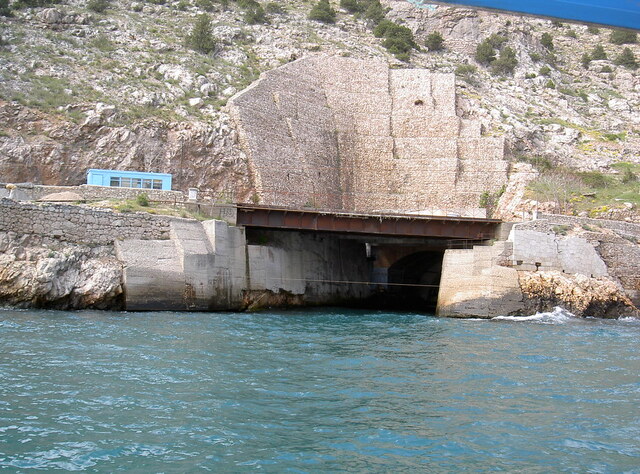
Cultural Significance and Public Fascination
Cliffside structures have become cultural symbols of resilience, mystery, and ingenuity. Their dramatic settings and historical importance continue to capture the public’s imagination.
- Abandoned Mystique: Many cliffside bunkers, like the Balaklava Submarine Base, have been abandoned, leaving behind haunting remnants of a bygone era. The rusted metal and decaying walls add to their mystique, attracting adventurers and historians.
- Representation in Media: Cliffside bunkers have been immortalized in films, games, and novels. Their stark, isolated designs often serve as backdrops for stories of survival, espionage, or apocalyptic scenarios. For instance, structures like the concept bunker are frequently featured in science fiction as symbols of humanity’s struggle against nature or enemies.
- Tourist Attractions: Some of these structures have been repurposed into museums or public attractions. Visitors can explore their history while admiring the ingenuity that went into building them.
Conclusion
Cliffside structures, whether real or conceptual, stand as enduring symbols of human ingenuity and adaptability. From military outposts to survival bunkers, they reveal how architecture can thrive in even the most extreme conditions. These marvels invite us to reflect on our ability to merge innovation with nature while preserving the past for future generations.
